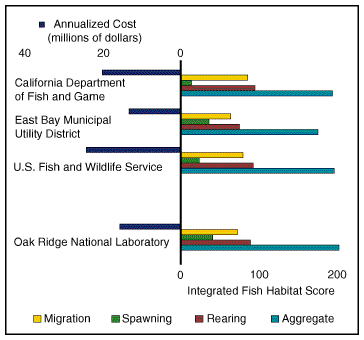


Oak Ridge National Laboratory analysis identifies a minimum flow
regime that yields high habitat availability for fish in a California stream at a low cost to
water suppliers.

Can the needs of the anadromous salmon population that uses the Mokelumne River for spawning and rearing be met if the water demand of the many human users of this river is sustained?

A hydrologic assessment of the Mokelumne River, an economic assessment of human demands, and a biological assessment of the fishery to determine minimum instream flow requirements at a federally licensed hydropower dam were combined. The analysis identified minimum flow requirements from the dam that would minimize water supply impacts and maximize the habitat available for the salmon. The Oak Ridge National Laboratory alternative compares well with alternatives developed by the U.S. Fish and Wildlife Service, the California Department of Fish and Game, and the East Bay Municipal Utility District.

Federal Energy Regulatory Commission (FERC). 1993. Final environmental impact statement, proposed modifications to the lower Mokelumne River Project, California. FERC Project No. 2916-004. Division of Project Compliance and Administration, Federal Energy Regulatory Commission, Washington, D.C.
Integrated Assessment Briefs. 1995. ORNL/M-4227. Oak Ridge National Laboratory, Oak Ridge, TN.